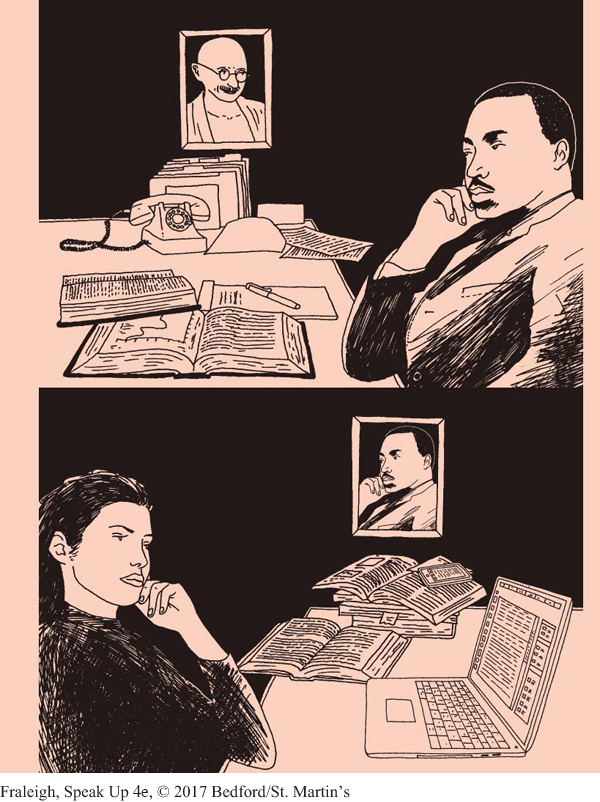Chapter 2 DEVELOPING YOUR FIRST SPEECH

Look for the  and
and  throughout the chapter for adaptive quizzing and online video activities.
throughout the chapter for adaptive quizzing and online video activities.
Page 35
“Preparation and perseverance are the keys to a successful speech.”
On August 28, 1963, tens of thousands of Americans traveled huge distances to join the March on Washington for Jobs and Freedom. Gathering at the Lincoln Memorial, they sang protest songs and hymns and listened to speeches by civil rights leaders.1 After nearly three hours, the final orator stood at the lectern, with the Lincoln Memorial in the background, and addressed an audience of about 250,000 people.2
The speaker, Martin Luther King Jr., told the audience, “I have a dream . . . a dream big enough to include all Americans.”3 The dream that King shared—
Page 36
King’s “I Have a Dream” speech has won renown among speech scholars as the greatest oral presentation of the twentieth century. A gifted public speaker, King won his first oratorical contest when he was just fifteen years old.4 Yet he still diligently prepared for the March on Washington speech, putting more care into it than he’d put into any of his previous public addresses.5 Indeed, he typically invested much time in speech preparation, writing multiple drafts of his Nobel Peace Prize acceptance speech and spending as many as fifteen hours preparing a typical Sunday sermon.6
The careful attention that King gave to preparing his addresses illustrates an important lesson that can benefit all public speakers, whether they have experience or are new to public speaking: preparation and perseverance are the keys to a successful speech. We have found that students who have a well-
In this chapter, we provide a preview of the speech preparation process. We begin by discussing the importance of preparation. Next, we cover five major considerations you should keep in mind while preparing a public address. We then lay out steps you can follow to deliver a successful speech early in the term. Finally, we offer tips for minimizing speech anxiety.